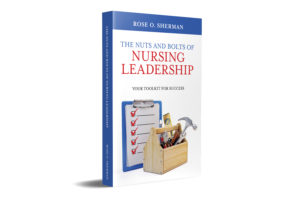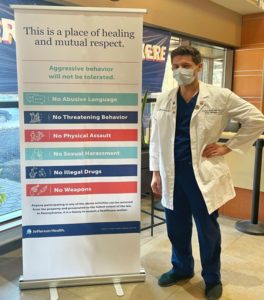By Rose O. Sherman, EdD, RN, NEA-BC, FAAN
Bullying and Incivility are enormous problems in healthcare environments today. Historically, the solution would be to work intently with team members to establish no-bullying cultures. Rebuilding a toxic culture of bullying has always been challenging but never more so than now. The sources of bullying and Incivility have dramatically changed in the past two years. In the recent ANA pulse survey, it was noted that the predominant sources of Incivility and bullying of healthcare staff are coming from patients and their families. Consider the following data from the survey:
- 66.10% of the nurses surveyed (12,000+) experienced bullying and Incivility at work.
- 23% of nurses experienced bullying outside of work, and 12% reported being victims of violence.
- 57% reported bullying and violence from patients.
- 53% reported bullying and violence from families.
- Nurses working in acute care, ERs, ORs, Critical Care, and Mental Health experienced the highest levels of violence and bullying.
- Nurses working in health policy, public health, and case management experienced bullying and Incivility outside their work settings.
I now hear growing concern about the impact of patient and family bullying and Incivility on nurse mental health. An emergency department manager told the following story:
I have been the director here in this ED for 15 years. I have never seen the types of behaviors from patients and families that I am seeing now. They come in very angry and entitled. They see a busy ED and all they care about is their own needs when frankly 80% don’t even need ED care. Yesterday, we were holding an older patient for observation. Five adults accompanied him. Given the space limitations, we have rules that only one person should wait with the patient. His daughter was having none of it. She and several others in their group kept walking in and out of packed ED. I pulled her aside to try to talk with her. Her Dad was doing fine – we just needed to keep him for a few hours for observation. I asked that they limited visitation in the ED to one person and suggested that the others could go home as he was stabilizing. She looked at me and said …..we are not going anywhere. You can call administration and have them come down. This place is pretty crappy anyway, so you won’t be happy when I post all of it on social media. I walked away – and asked our ED doctor to discharge her Dad as soon as possible. This type of behavior is becoming commonplace. My nurses feel very disrespected. It adds fuel to an already bad situation.
At this point, healthcare executives and nurse leaders are trying to approach the problem using a trauma-informed lens. People have been through a lot in the past two years, and many are not good at regulating their behavior. Interactions with the healthcare environment tend to be stressful. There is an additional problem in healthcare: patient satisfaction is a metric that drives reimbursement, so there is a tendency to tread lightly. There are no easy answers to the problem.
In our June 2022 edition of Nurse Leader. Lyn Ketelsen RN, an expert in the patient experience, discusses the need for a reset on how we look at the patient experience in a Post-COVID environment. For the past two decades, the patient experience has been the focus of everything we do. But healthcare has changed, and so have the resources available to deliver it. We have not posted the signs in our hospitals like restaurants to warn customers that staffing is short so be kind to those who are working. Healthcare leaders often behave publicly like everything is the same as in 2019 when nothing could be further from the truth.
It is now the mental health and wellbeing of the workforce which is at stake as incivility and bullying have increased. The picture that accompanies this article greets visitors to Jefferson Health in Philadelphia. With this sign, they are taking a stand. If we have safe and healthy work environments, we now need to place boundaries on patient and family behavior.
Reference
COVID-19 Two-Year Impact Assessment Written Report Final American Nursing Foundation, March 2022.
© emergingrnleader.com 2022
Our Most Popular Right Now – Become the Boss No One Wants to Leave Nurse Retention in Turbulent Times
Give your leadership team the gift of a highly rated webinar – Nursing Leadership in 2022: Rebooting after a Life-Quake A Nursing Leadership Reboot Workshop
Read the Nurse Leader Coach – Available at Amazon and Other Book Sellers.
Recommended Book by the Association of Critical Care Nurses – The Nuts and Bolts of Nursing Leadership: Your Toolkit for Success




 LinkedIn
LinkedIn Instagram
Instagram